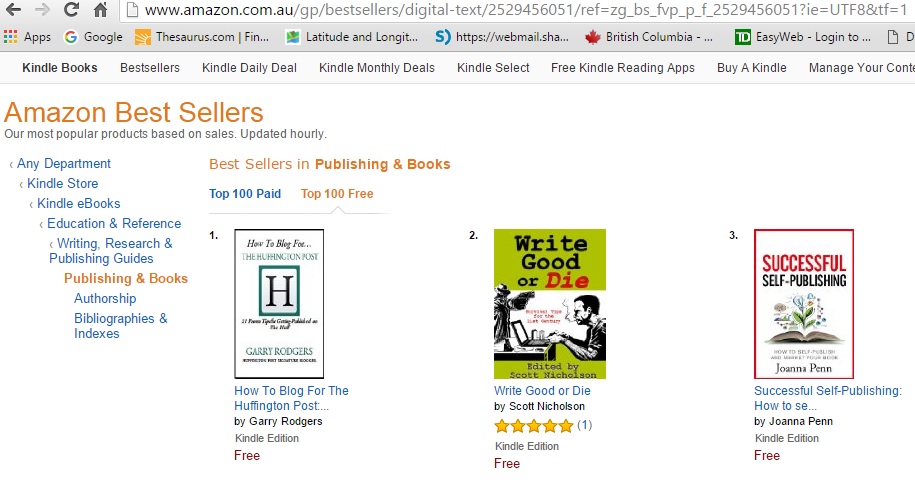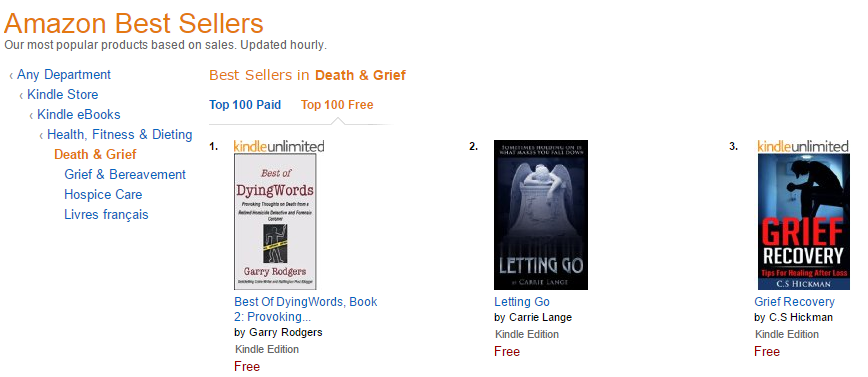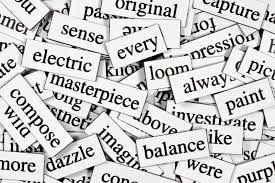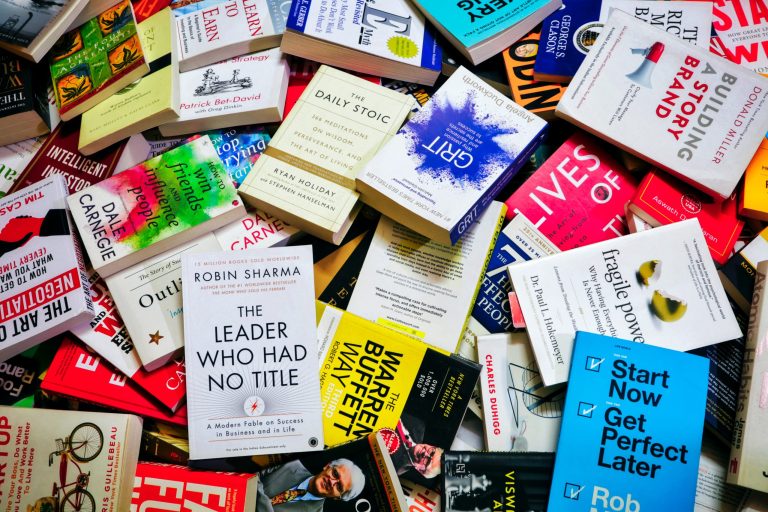How to Hit #1 On Amazon’s Bestseller List—Repeatedly
Today’s post is written by author Garry Rodgers:
Every writer dreams of hitting #1 on the big dog’s bestseller list. Amazon is the world’s largest bookseller and has the largest search-engine capacity—second only to Google.
Amazon offers over four million books in their online store and grows by 4,200 per day. That’s a lot of competition. But in the last five weeks, four of my Amazon Kindle ebooks nailed the #1 free spot and the fifth went to #2 in their categories.
How’d I pull this off? And how can you do the same?
Well, the bestselling secret is not in organic sales. It’s in manipulating SEO. Search Engine Optimization. It’s worked for me, and here’s how working Amazon’s system will work for you.
First, credit goes to my friend and fellow author, Susanne Lakin. Susanne just released a new online course properly called Targeting Genre for Big Sales. I worked with Susanne as a beta-tester—an Amazon lab rat—and I came out a winner. I also did this without spending a dime.
Here’s how I did it:
One of my #1 Bestselling ebooks is a writer’s guide called How to Blog for the Huffington Post—21 Proven Tips for Getting Published on the Huff. It serves as a lead magnet to the second book—a main guide surprisingly called How to Blog for The Huffington Post—101 Proven Tips for Getting Published on the Huff.

I researched the material with help from other Huff bloggers who have way more Huff Post experience than me. I drafted the manuscripts in Word.doc (easy!). I did my own editing (gasps!) by using the Grammarly app. I designed my own covers in Word (groans!) and then sized them as a jpeg in Paint (huh?). I did my own ebook formatting (how?) in Calibre, and then uploaded to Amazon’s Kindle Direct Publishing (simple!).
And nothing happened. Zilch. I was at the bottom of the list and spinning fast into the black hole of self-publishing. I did some tweets and a few blog posts, which saved me from imploding and then went on to work on other projects.
But I’d been following Susanne’s emails promoting her course on Targeting Genre for Big Sales, and she was making sense to me. I knew my problem lay in discoverability. My Huff guides were okay as technical publications, and they’re definitely the right information if you want to get published on the Huffington Post, but nobody was hearing about them.
So, I decided to try something out. I followed Susanne’s step-by-step strategies.
Now, there’s a lot more to this process that Susanne thoroughly covers in her course than I have room to tell you here. I highly recommend you pay for and take her course if you want to achieve the same success I have.
In a nutshell, this is what I did. And remember—it’s all about discoverability.
- Proper Key Word and Key Phrase Research
Amazon lets you enter up to seven keywords into your dashboard as metadata to allow the search engine to find and promote you. Go beyond the term keyword because the trick is in key phrases.
Amazon allows you to use any combination of words to make up phrases. The phrases just have to be separated by six commas.
Finding effective key words and phrases is not difficult, but it’s time-consuming. There is an effective tool called KDSPY that Susanne says is very effective and well worth the forty-seven bucks.
But I didn’t use it. I looked at this as a money-making venture, not a money-spending one, so I did this the old-fashioned way. I used pen and paper.
The first thing to do is bring up the Amazon.com Kindle store on your browser. If it’s a Kindle ebook you’re promoting and not just a print book, make sure you’re searching in the Kindle department. And make sure you’re at the Amazon.com site (the American site) because that’s where the heavy traffic is specifically searching. Don’t worry—the information will work on all the Amazon sites worldwide.
This is where you have to be imaginative.
You have to think like a reader who is looking for your product. And, yes, your book is just a product to a reader who is a consumer. You have to give that consumer the best opportunity to discover and buy the product you’re offering for sale.
It took me a couple hours to play around with combinations and here are the key words and phrases I came up with for the Huff Post 21 Tip guide:
How to Blog for Huffington Post, How to Get Published By Huffington Post, Blogging at Huffington Post, Blogger, Huffington Post, HuffPost, Ariana Huffington
It makes no difference what order you put them in or if you use capitals. It’s the combinations that matter.
- Product Description
Amazon’s search engine doesn’t care about what you say or how attractive you make it. It’s looking for relevancy to searches so they can sell something that’s being looked for and wanted. This is why you need to salt the description with your title, subtitle, and key words and phrases.
Here’s my start of my product description for the 21 Tip guide:
“Every blogger’s dream should be to get their blog published by the Huffington Post.” So says Huff Post signature blogger and bestselling writer, Garry Rodgers, who gives you 21 Proven Tips on how to get your blogs posted on the Huff.
Serious bloggers know the Huffington Post is the world’s largest blog site. Getting published on the HuffPost is a significant badge of achievement—it’s the gold standard of blogging—social approval by a major media corporation that your work meets its mark of excellence. You just can’t buy this type of exposure.”
While Amazon doesn’t care about what your message says or how it looks, your product searcher sure does. This is why it’s vital to set up the description with HTML (Hyper Text Markup Language) coding by using bolds, italics, quotations, lists, headings, subtitles, paragraph structure and so on.
There’re two ways to do this:
One is you can learn HTML coding and do all the <b><i><p> stuff yourself, and it isn’t that hard. Susanne tells you how in her course, and she has a pdf cheat-sheet for the universal HTML codes.
Susanne also refers you to a cool, free tool called the Amazon Book Description Generator that I used. Be sure to use as many of the 4,000 allowed spaces as you can. Even if your perspective reader doesn’t absorb them all, the extra words and phrases all add up to discoverability through SEO. Also, don’t just write your description to favor your key elements. It still has to flow for your reader as it’s the ambassador of your material to the Look Inside.
- Category Selection
It’s critical to slot your book in the proper BISAC (Book Industry Standards & Communications) category. This is not something Amazon invented. It’s universal, but you need to understand the primary and secondary categories.
Again go to the Amazon.com Kindle store and look at the categories in the left sidebar. Beside each, you’ll see a numeric figure in brackets which lists the amount of publications in that slot. You have to play around with the subcategories until you find a fitting place with a relatively low number to compete with.
Be aware that Amazon only allows you two entries, so you want to make sure you get the proper, relevant ones and not go off into some obscure shelf that no one visits.
As with key material and product description, balance is important.
Here’re the two categories that I selected for the 21 Tips guide:
REFERENCE > LANGUAGE ARTS & DISCIPLINES > Journalism (3,245)
REFERENCE > LANGUAGE ARTS & DISCIPLINES > Publishing (4,498)
Now go back and salt your product description with the category keywords. This is vital to complete a loop for SEO.

I entered this book in the KDP Select program and set it on a five-day free promotion. Within half a day, I noticed enormous leaps in their list placings and, within a day, it went to the #1 spot in Journalism on all four of the English-speaking stores: USA, UK, Australia, and Canada, and it climbed to #3 in Publishing.
So was this a fluke? Did I just get lucky and surf a good wave? Could I do it again?
I tried the same process with four more ebooks, and they’ve all been outstanding successes.
Now I can hear some of you saying “Wait a minute,Garry. Being at the top of a free list is not the same as selling on the paid list.”
Ah, no. I think it’s way better for a new book because that’s what generates traffic, gains new readers, starts reviews, links to your other products, including your website and mailing list. It’s all about discoverability, and that, in my opinion, is the name of the game. You have to give in order to receive. That’s as sure as the law of gravity.
I highly recommend Susanne Lakin’s course on Targeting Genre for Big Sales. It’s working for me—five books in a row—and it can work for you . . . if you want to hit #1 on Amazon’s bestseller lists.
 Garry Rodgers is a retired homicide detective and forensic coroner, now bestselling crime writer. Garry lives on Vancouver Island on Canada’s west coast and hosts a popular blog at www.DyingWords.net.
Garry Rodgers is a retired homicide detective and forensic coroner, now bestselling crime writer. Garry lives on Vancouver Island on Canada’s west coast and hosts a popular blog at www.DyingWords.net.
Connect with him on Facebook and follow on Twitter.
I’ve extended the discount date, so if you enroll by March 31, you can get $100 off the regular price by using the coupon code LIVEWRITETHRIVE. CLICK HERE to enroll!
Don’t put off your success any longer. With my 30-day money-back guarantee, you have nothing to lose!












Excellent points.
One addition: Amazon uses the BISAC categories primarily for its print books, and its own categories for Kindles. (Confusing, but that’s because BISAC is already in the industry.) Your keywords are the other factor that helps with both.
Interesting. It seems to me those categories in the KDP drop-down menu to choose categories lines up with the BISAC ones. Maybe they’ve added/expanded the choice there. I haven’t compared them.
That’s a very good point, Ken. It took me awhile to clue onto this which is why it’s necessary to search for key material in the Kindle drop-down rather than in the Book one – that is if you’re doing an eBook. Thanks for this.
Nice to see you here, Garry. Susanne, you are so generous with your knowledge. Thanks for all you do.
Hi Sue and Susanne – It’s a real pleasure to share my results which came from applying the knowledge and techniques that are so clearly laid out in the Targeting Genre course. Since I wrote this article, I’ve had another backlist ebook climb the charts. It made it into the top ten of the highly competitive category of Reference > Writing Skills. I can’t speak highly enough of how Susanne’s generous guidance has increased my discoverability by miles 🙂